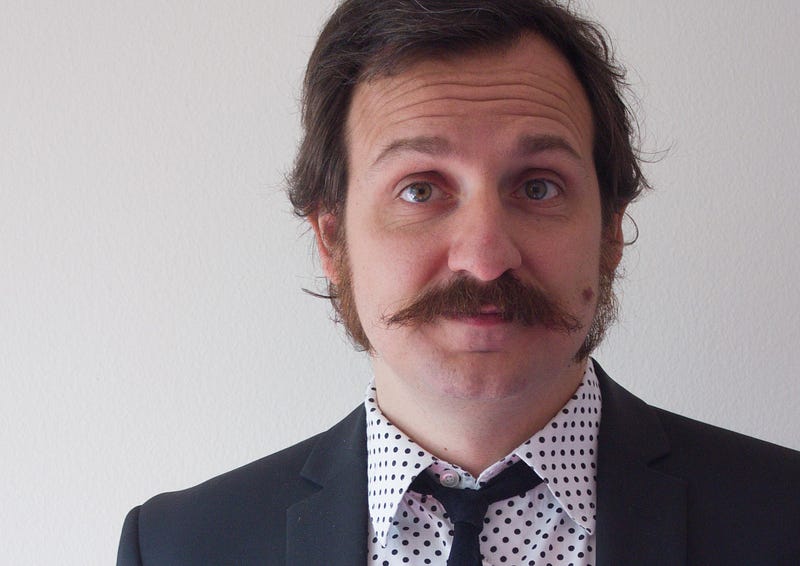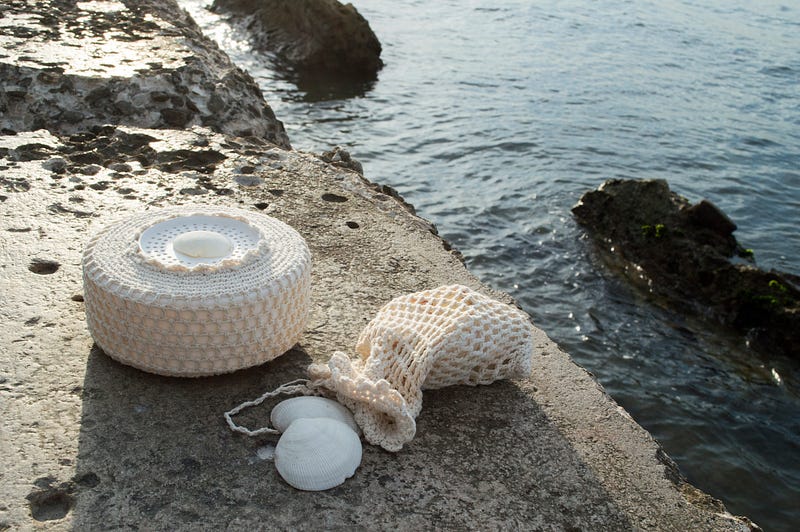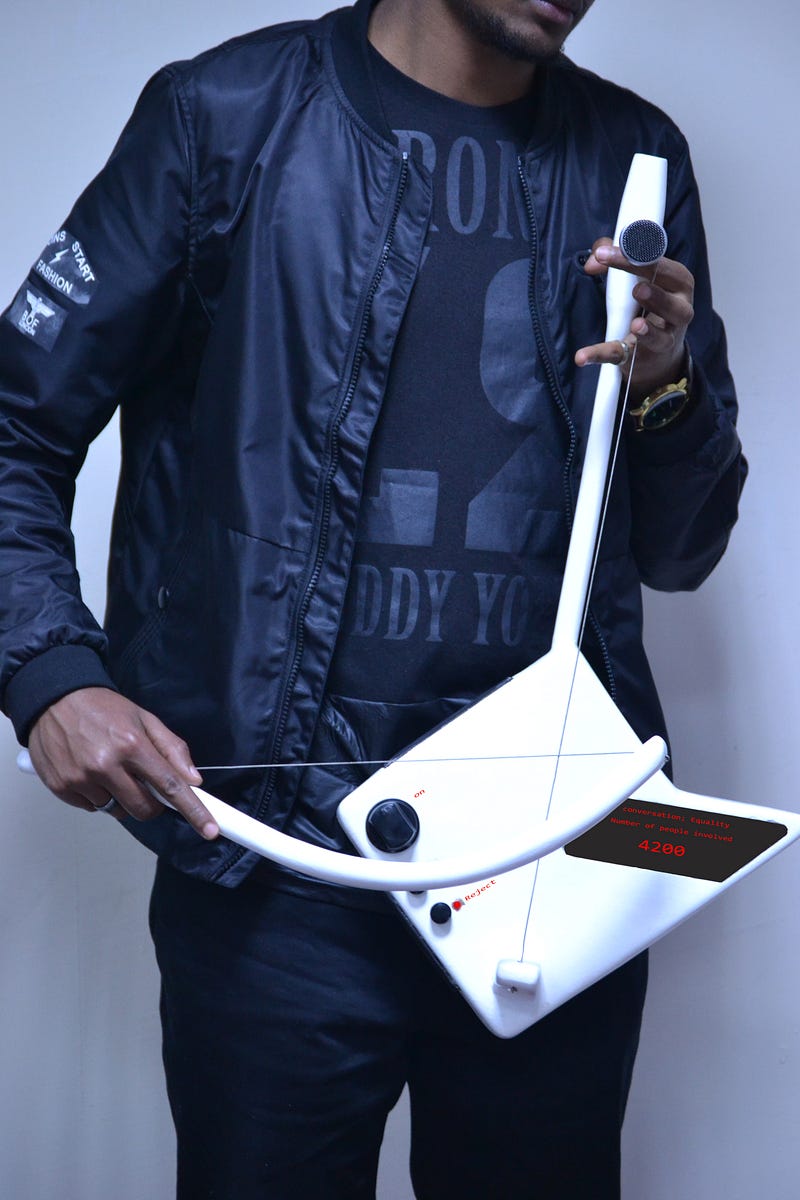
Paolo Cardini discusses how designing for a more equitable future requires a new process

Paolo Cardini is Associate Professor and Graduate Program Director of the Industrial Design department at Rhode Island School of Design. His work ranges from product to interaction design and from integrated communication to strategic planning. We talked to him about Global Futures Lab, a project that enlists students from around the world in designing and imagining speculative objects.
Tell me a little about your background and how you came to this work.
I started as a product designer, but came to realize quite early that objects are very interesting and powerful tools to deliver messages. Common objects can open debates and discussions. In my field, this kind of design is called “critical design” or “discursive design” or “design to debate” — all definitions that can be summarized as the use of objects not for their traditional functionality but as a medium to deliver messages.
I am Italian. I taught in Italy but left eight years ago when I started working for Virginia Commonwealth University, on their Qatar campus in the Middle East. I lived there for three years. Then I arrived in Providence at RISD five years ago. I’m lately experimenting with a lot of objects coming from all around the world. I’m very much interested in how objects interact with identities and cultures.
 Feeling Human, by Maryam Alsadat
Mirian / Isfahan, Iran
Feeling Human, by Maryam Alsadat
Mirian / Isfahan, IranDo you use the word “co-creation” in your field?
Yeah. I mean, there is co-design. And there is “open design,” which applies an open-source philosophy to creating products and hardware. Both involve co-creation.
Human-centered design is about centering your design around the end-user of the object. So, it’s creating an object where the goal is defined (“I need to design a chair for obese people”) and a co-creation is necessary: you need to work with your target to be able to design that specific object. The other form, open-source design, is a community process exactly like creating open-source software: Community members participate without necessarily defining a final goal. It’s an open system in which people can contribute, change, modify, and customize eventually. The open-source design field is a little disconnected from the commercial side of it. Open source starts with the will — and without traditional goals at the beginning.
“Customization” involves creating frameworks where people can operate and generate their own version of an initial idea.
Then there is another form related to my latest project: working with international communities and trying to stay away from the process as much as possible. That is probably co-creation as mediation between parts. I’m working with international communities on different ideas of the future at the moment, and I’m trying to not teach any methodology. I’m trying not to guide their processes, but, rather, provide a stimulating environment for them to create ideas and proposals. This is design, but it’s dealing with design differently — as a facilitator and mediator.
Can you talk a little bit about why you’ve headed in that direction?
I am trying to define different ideas of the future that are not Western-oriented or Western-polluted. One of the concerns of the project is that it would be some Western guy going in and running workshops in different places. For me, it was critical to involve others in this operation.
Can you describe a little bit more the Global Futures Lab?
A part of my professional interest is called “speculative design.” Speculative design is the way to create fictional objects that speak about possible or plausible futures. Ethics, religion, social issues, politics: something that enables people to reflect about the future they want and the present they have. Every time we think about the future, we naturally criticize our present as well.
Speculative design came out of mostly Western exercises. They all spoke about problems that we have in the West. So I decided to start to investigate in other countries. I went to Iran, India, Peru, Ethiopia, and Cuba. it was quite interesting to ask them what they think about the future. Their ideas about the future are pretty different from the ones that my students had here.
Did you take these objects and go to the rest of the world or did you take the ideas . . . ?
I went around the world and asked students to create those objects. In workshops, I asked them to write a one-page science-fiction story. The only constraint was that the story needs to be located in that specific place in that specific country. Then I asked them to visualize those futures in whatever way they wanted. Some of them grabbed videos. Others did watercolor painting. Other did collage.
Then I asked them to build objects embedded in those futures. In each place, we built what we called souvenirs from the futures. Different objects speak about a future that is different in a way that it involves spiritually. It involves religion. It involves things that usually Silicon Valley and Hollywood-centered future-building are not including.
 Ropa Vieja, by Oscar Ernesto Romero
Navarro, Maysa Sabater Fernández,
Helena Beatriz Fernández Hernández / Havana, Cuba
Ropa Vieja, by Oscar Ernesto Romero
Navarro, Maysa Sabater Fernández,
Helena Beatriz Fernández Hernández / Havana, CubaAnd these are all industrial design students — or do students from other disciplines come to your workshops?
It depended on the institution, but I tried to push to have many different disciplines involved.
What were the students’ responses to your design challenge?
The responses are on the website. For most of them, it was the first time they used design as a critical approach. Often, they used the future as a way to criticize their present.
I work in pretty delicate environments. Iran, Cuba, Ethiopia… so it was quite interesting to see students feeling free to provide their opinion and their judgment on their present, using future as a safe zone to deal with that.
What were some of the biggest insights?
The biggest issue is the fact that there is a responsibility on my side to communicate these projects without telling my story but their story. I’m able to give one interpretation of those projects, but my students have different perspectives. So, I’m very careful not to put my words in their mouths, in part because it can be pretty dangerous for them. So, what I’m telling you is only my perception.
In Ethiopia as well as in Iran, I had to send emails to students’ professors asking them to be sure it was okay to publish. I didn’t want any of these kids getting into trouble for participating. In Ethiopia, at the time I was there, there were lots of conflicts with different ethnic groups; an ethnic group that makes up only six percent of the country was ruling and managing all the economic and political power.
One group, for instance, created this “azmari.” Azmari, in traditional Ethiopian culture, is a sort of minstrel: someone who sings stories about the rulers or popular culture. So they created this scenario in which a singer in the future will collect public opinions and deliver those opinions to the government. They created an object that is a restyling of a traditional musical instrument, a very modern and high-tech version. But the point is not the instrument. It’s what the instrument does — and that is collecting the voice of the people and speaking for the people.
 Azmari, by Amanuel Alemayehu and Trsit
Mulugeta / Addis Ababa, Ethiopia
Azmari, by Amanuel Alemayehu and Trsit
Mulugeta / Addis Ababa, EthiopiaA similar thing happened in Cuba, where students created a scenario in which the island will become a retirement community. All of the island, the Cuban island, will be inhabited by old people. All the technology in the island will be for old people, and everything will be for old people. They created this little device that enabled children to ask elders questions remotely. In that case, the students were criticizing the present reality, where a lot of young people are leaving the island because the island doesn’t have what they want. Again, there is an object that speaks about the relationships between generations, but in reality, there is much more to be unveiled.
Would you describe this as a human-centered design?
No. User-centric design is strongly based on methodology. In this project, I want to escape any methodological approach. It’s very dangerous when you’re working with other communities. It’s sort of colonizing them in the way they operate. I tried to expose them to stereotypes about futures, but I didn’t teach them any methodology. I tried just to create an environment in which they could express themselves and answer my questions. So, I don’t think it’s human-centric. I think it’s more like critical design.
Could you argue that you’re decolonizing the practice by considering the students that you’re working with as the invisible final users? That you’re involving people that have not conventionally been part of the Western design experience?
Yes. This exercise can be considered within the decolonization of speculative design, in this case. My goal in this project is to give people the opportunity to express their ideal future and for that idea to be heard; and, on the other side, my goal is suggesting to the Western community that other ideas of future should be considered, and there is not a standard.
What have you learned as a designer from this process?
Tons of things — and not only about design. We should really look at everything in a very pluralistic way. Arturo Escobar, an anthropologist, defined “pluriverse” as a world where many worlds fit. Having a future where many futures fit is something I learned is possible and crucial.
I know this is not a commercial exercise, but have you thought about the commercialization of these products?
They are not commercial at all.
There’s nothing you would do to replicate them and sell them?
The objects are fully fictional. The idea of creating a system in which companies ask people in other parts of the world what they are thinking without imposing their insights? That’s the commercial goal, eventually. Only a few of those projects could be commercially feasible. Some of them are just fantasy.
They could sell as art pieces.
Yes. You see this kind of design in art galleries, and not in shops. The objects are the students’ objects. I’m borrowing them for exhibitions, but if someone asks about purchasing, it’s their call.
With the multidisciplinarity of the outcomes, there are video pieces, there are objects, and there are comics. A group in India did an amazing fictional documentary about homosexuality, still a big taboo in India. They created a fictional documentary in which the government declares that everyone should be homosexual or sterilized for overpopulation reasons. It was based on Indian history where women were actually sterilized. All the campus was involved in the documentary, filming during the workshop, and everyone was talking about homosexuality. That was actually the goal of that project.
Do students get credit for the work they’ve done with you? Are they paid for their labor? What are they getting out of it besides the learning?
In Iran it was an extra-curricular activity; they didn’t have credits, but they were fully involved. Same thing in Cuba. That was about the will of the students to participate with the agreement that I was mentioning their name in any publication, in any effort to promote this project. In Ethiopia as well there were no credits involved, so the majority of the workshops depended on the students and on their will to participate. Some of the projects have been published in very important design blogs or reviewed in design books. It’s been extremely rewarding for the students to see their names and their work in the public arena.
In some of the locations I received a lot of projects and in others, students disappeared on the way. I knew that could happen, and that’s okay.
Do you have any final thoughts for others interested in similar co-creative work?
Like I said, having an open mind approach is the best thing you can do. If you’re able to connect at a human level, then even speaking different languages is not a problem. But if you try to mix different languages with someone you don’t get along with or understand, that becomes almost impossible.
It starts with the relationship first.
This article is part of Collective Wisdom, an Immerse series created in collaboration with Co-Creation Studio at MIT Open Documentary Lab. Immerse’s series features excerpts from MIT Open Documentary Lab’s larger field study — Collective Wisdom: Co-Creating Media within Communities, across Disciplines and with Algorithms — as well as bonus interviews and exclusive content.
Immerse is an initiative of the MIT Open DocLab and The Fledgling Fund, and it receives funding from Just Films | Ford Foundation and the MacArthur Foundation. IFP is our fiscal sponsor. Learn more here. We are committed to exploring and showcasing media projects that push the boundaries of media and tackle issues of social justice — and rely on friends like you to sustain ourselves and grow. Join us by making a gift today.